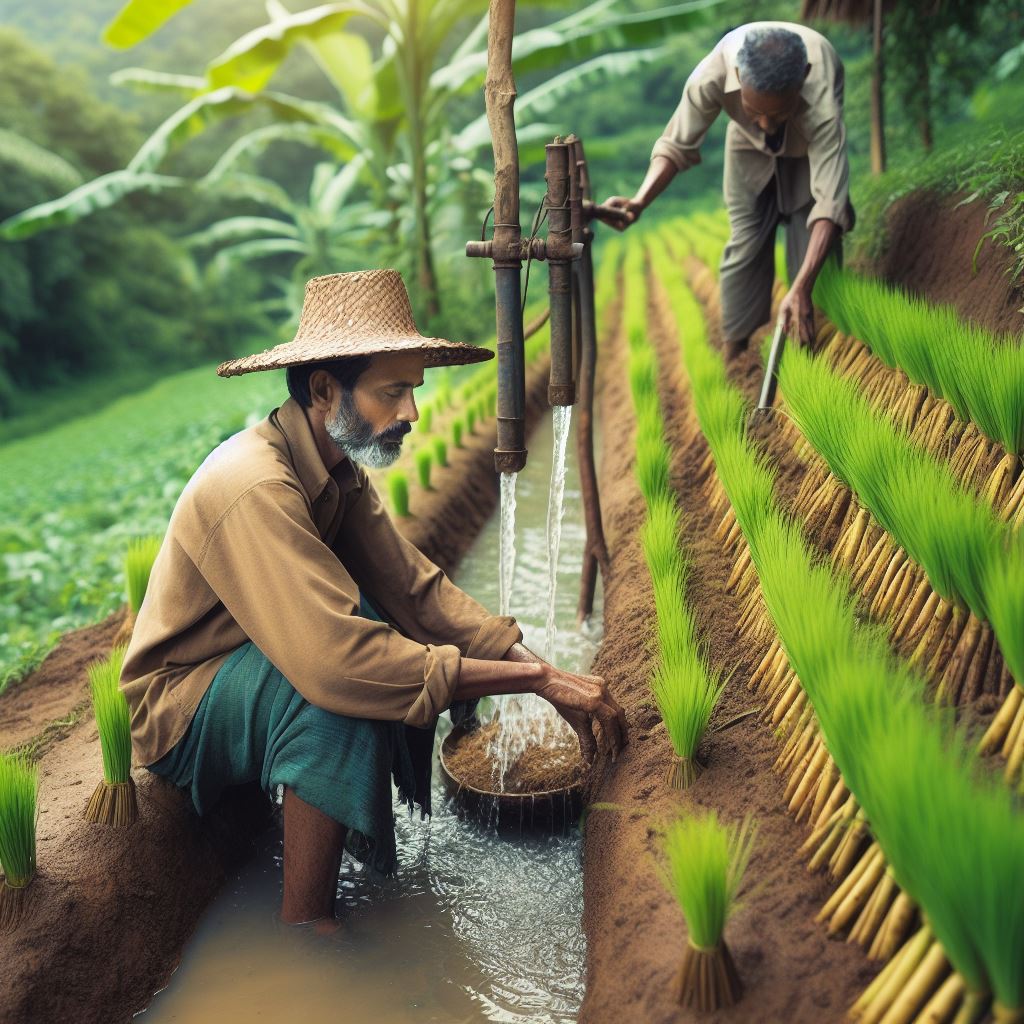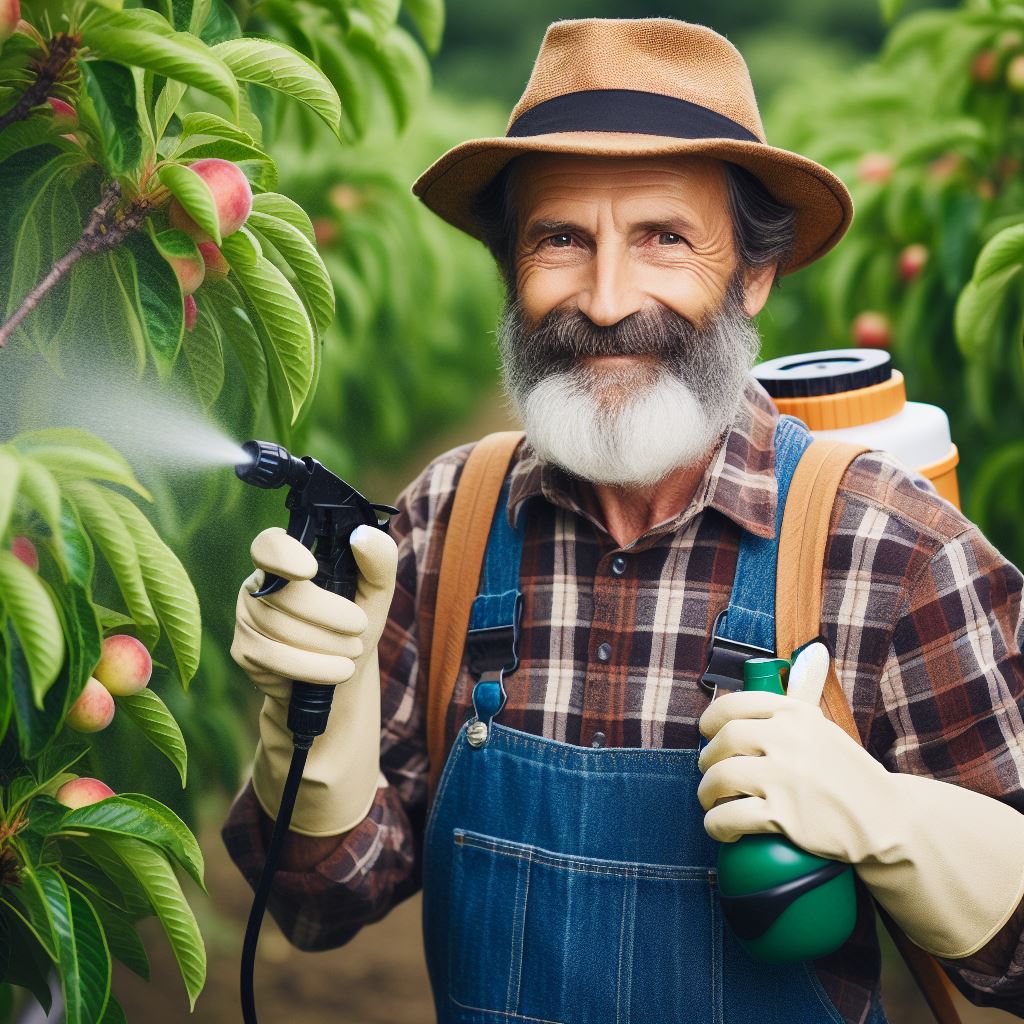Introduction
Water conservation is a critical aspect of sustainable management of this vital resource.
It involves using water efficiently and avoiding any wastage.
One effective method in water conservation is mulching, which plays a significant role in preserving soil moisture and reducing evaporation.
Mulching is the practice of covering the soil surface with a layer of organic or inorganic material, such as leaves, straw, wood chips, or plastic.
It has gained immense importance in water conservation due to its numerous benefits.
The primary role of mulching in water conservation is reducing evaporation from the soil surface.
Mulch acts as a protective layer, shielding the soil from direct sunlight and wind.
This barrier significantly reduces the amount of water lost through evaporation, especially during hot and dry periods.
In addition to reducing evaporation, mulching also helps in preserving soil moisture.
The layer of mulch acts as an insulator, preventing water from escaping into the atmosphere.
It keeps the soil cooler during hot weather, reducing the need for frequent watering.
Moreover, mulching helps improve soil structure, enabling it to retain water more effectively.
It prevents soil compaction and erosion, allowing water to penetrate deep into the soil and be available to plant roots.
Furthermore, mulching enhances the soil’s overall health by promoting microbial activity, which aids in nutrient cycling and improves its water-holding capacity.
This not only conserves water but also benefits plant growth and reduces the need for synthetic fertilizers.
Transform Your Agribusiness
Unlock your farm's potential with expert advice tailored to your needs. Get actionable steps that drive real results.
Get StartedIn essence, mulching plays a vital role in water conservation by reducing evaporation, preserving soil moisture, improving soil health, and enhancing overall plant growth.
It is a simple and cost-effective method that can be implemented in various agricultural, horticultural, and landscaping practices for a more sustainable use of water resources.
Definition and Purpose of Mulching
Definition of Mulching
Mulching refers to the practice of covering the soil surface surrounding plants with a layer of organic or inorganic material.
This layer acts as a protective barrier against environmental factors such as temperature fluctuations, weed growth, and soil erosion.
Purpose of Mulching in Gardening and Farming
- Weed Suppression: Mulching helps suppress weed growth by covering the soil and preventing weed seeds from receiving sunlight, thus inhibiting their germination. This reduces the competition for nutrients and water between the weeds and the desired plants.
- Moisture Conservation: One of the primary purposes of mulching is to conserve moisture in the soil. The layer of mulch acts as a protective shield, reducing evaporation and retaining moisture in the root zone of plants.
- Temperature Regulation: Mulching helps regulate soil temperature, keeping it cooler during hot summer months and warmer during cold winter months. This stable temperature promotes healthy root development and protects plants from extreme weather conditions.
- Soil Health Improvement: Mulching enriches the soil by gradually breaking down organic materials, such as leaves, wood chips, or compost, which release essential nutrients into the soil. This improves soil structure, fertility, and microbial activity, supporting overall plant health.
- Erosion Control: Mulch acts as a barrier, preventing soil erosion caused by wind and water. It stabilizes the soil particles, reducing runoff and retaining valuable topsoil, which is vital for plant growth.
- Pest and Disease Control: Certain types of mulch, such as straw or wood chips, can act as a deterrent against pests and insects. They create an unfavorable environment for pests, preventing them from reaching the plants and reducing the risk of diseases.
- Aesthetic Appeal: Mulching enhances the visual appeal of garden beds and landscapes by providing a neat and uniform appearance. It adds texture and color, making the garden more visually appealing and creating a welcoming environment.
Connection Between Mulching and Water Conservation
- Reduced Evaporation: Mulching significantly reduces evaporation by acting as a barrier between the soil and the atmosphere. This reduces the water loss from the soil surface, ensuring that more water is available for plant uptake.
- Increased Water Infiltration: Mulch enhances water infiltration by preventing soil compaction and facilitating the absorption of water into the soil. This helps water reach plant roots more effectively, reducing the need for frequent irrigation.
- Improved Water Holding Capacity: The layer of mulch helps trap moisture in the soil, increasing its water holding capacity. This reduces the frequency of watering while ensuring plants receive adequate moisture, especially during dry periods.
- Protection from Drought Stress: Mulching provides insulation, shielding plants from extreme temperature fluctuations and reducing drought stress. This allows plants to withstand drought conditions for longer periods, minimizing water requirements.
- Augmented Plant Health: As mulch improves soil health and fertility, plants grow stronger and healthier, becoming more resilient against water stress. They develop deeper root systems, increasing their ability to access water from deeper soil layers.
In fact, mulching plays a vital role in water conservation by reducing evaporation, enhancing water infiltration, improving water holding capacity, protecting plants from drought stress, and promoting plant health.
Whether in gardening or farming, the use of mulch proves to be an efficient and sustainable practice for better water management and overall soil health.
Read: No-Till Farming: Pros & Cons
Benefits of mulching in water conservation
Mulching plays a crucial role in water conservation by providing various benefits to the soil and plants.
Retention of soil moisture
One of the primary benefits of mulching is the retention of soil moisture. By covering the soil with a layer of mulch, the rate of evaporation is reduced significantly. This helps to keep the soil moist for a longer duration.
Additionally, mulching prevents the soil from drying out and cracking, especially during hot and dry periods. The mulch acts as a barrier, preventing direct exposure to the sun and wind, which can lead to excessive moisture loss.
Suppression of weed growth
Mulching also helps in suppressing weed growth, which, in turn, conserves water resources. Weeds compete with desirable plants for water, nutrients, and sunlight.
By laying down a thick layer of mulch, weed seeds are blocked from sunlight and are less likely to germinate.
Moreover, mulching reduces the need for frequent watering as established plants receive sufficient water while weeds struggle to survive, ultimately conserving water for desired vegetation.
Protection against soil erosion
Another significant benefit of mulching is the protection it offers against soil erosion. When exposed to heavy rains or irrigation, bare soil can easily erode, leading to the loss of valuable topsoil.
Mulching acts as a protective cover that minimizes water runoff by absorbing and holding the water, thereby reducing soil erosion.
Furthermore, mulching prevents the loss of soil due to water flow. The mulch layer absorbs the impact of splashing rain or irrigation, allowing the water to penetrate the soil gently without washing it away.
In summary, mulching is an effective practice for water conservation, offering several benefits. It helps retain soil moisture by reducing evaporation and preventing drying and cracking of the soil.
Mulching also suppresses weed growth, saving water for desired plants by minimizing competition. Lastly, mulching protects against soil erosion by reducing water runoff and preventing soil loss.
Incorporating mulching into gardening and landscaping practices can contribute to sustainable water management.
Read: Sustainable Water Use in Farms
Types of mulching materials
Organic mulches
Examples and benefits
- Straw: Helps retain soil moisture and controls weed growth.
- Wood chips: Insulates the soil, prevents erosion, and adds nutrients as it decomposes.
- Leaves: Acts as a natural weed barrier, retains moisture, and improves soil texture.
- Grass clippings: Suppresses weed growth and provides nitrogen to the soil.
Decomposition process and soil enrichment
Organic mulches break down over time, adding organic matter to the soil. This decomposition process enhances soil fertility and structure, promoting healthy plant growth.
Nutrients from the mulch are released slowly, providing a constant source of nourishment to plants.
Inorganic mulches
Examples and benefits
- Plastic film: Retains moisture, suppresses weed growth, and protects against extreme temperatures.
- Rubber mulch: Reduces weed competition, prevents soil erosion, and conserves moisture.
- Gravel: Allows water to penetrate the soil easily, protects against erosion, and aids in drainage.
- Landscape fabric: Prevents weed growth, conserves moisture, and provides soil protection.
Reflective properties and temperature control
Inorganic mulches, such as plastic film and rubber mulch, have reflective properties. This helps to regulate soil temperature by reflecting sunlight and reducing heat absorption.
In hot climates, inorganic mulches can keep the soil cooler, preventing heat stress in plants. They also prevent soil moisture evaporation, resulting in water conservation.
Showcase Your Farming Business
Publish your professional farming services profile on our blog for a one-time fee of $200 and reach a dedicated audience of farmers and agribusiness owners.
Publish Your ProfileOverall, using mulching materials is essential for effective water conservation in gardening and landscaping practices.
Both organic and inorganic mulches offer numerous benefits and play a crucial role in maintaining soil moisture levels, controlling weed growth, and enriching the soil.
Organic mulches, such as straw, wood chips, leaves, and grass clippings, not only retain moisture but also improve soil texture and fertility through decomposition.
These materials provide a slow release of nutrients, ensuring continuous nourishment for plants.
On the other hand, inorganic mulches like plastic film, rubber mulch, gravel, and landscape fabric offer different advantages. They effectively suppress weed growth, conserve moisture, and protect the soil, preventing erosion.
Additionally, their reflective properties help regulate soil temperature, preventing extreme heat or cold stress in plants.
By choosing the appropriate type of mulch based on specific needs and preferences, gardeners and landscapers can optimize water conservation efforts and enhance plant health.
Mulching is a sustainable and cost-effective solution that minimizes water wastage, reduces the need for irrigation, and promotes overall environmental health.
Read: Crop Diversity Benefits Revealed

Discover More: Crop Rotation: Enhancing Soil Fertility
Delve into the Subject: Secrets to Perfect Crop Cultivation for High Yields
Applying mulching techniques for water conservation
Applying mulching techniques is essential for effective water conservation in gardening and landscaping practices.
Mulching involves covering the soil surface around plants with a layer of organic or inorganic materials, providing various benefits such as reducing water evaporation, minimizing weed growth, and regulating soil temperature.
Choosing the right mulching materials
1. Consideration of climate and soil conditions
The choice of mulching materials should be based on the specific climate and soil conditions of your region.
For example, in hot and dry climates, it is advisable to use materials that retain moisture, while in wet climates, materials that allow for better drainage should be utilized.
2. Compatibility with plant species
Each plant species has different moisture requirements and preferences. It is crucial to select mulching materials that are compatible with the specific plants you are growing.
This ensures that the mulch helps retain moisture without suffocating or damaging the plants.
Applying appropriate mulch depth and coverage
1. Determining the optimal thickness
The thickness of the mulch layer affects its water retention capacity. Generally, a mulch layer of 2-4 inches is recommended.
However, you should consider factors such as the soil type, plant water needs, and local climate conditions when determining the ideal mulch thickness for water conservation.
2. Ensuring uniform coverage and minimizing gaps
To achieve maximum water conservation benefits, it is important to have uniform mulch coverage without any exposed soil or gaps. This helps prevent water evaporation, maintain soil moisture levels, and inhibit weed growth.
Regularly inspect the mulched area and fill in any gaps or replenish the mulch layer as needed.
Maintaining and replenishing mulch
1. Regular inspection and weed removal:
It is essential to regularly inspect the mulched area to identify any weed growth.
Weeds compete with plants for water and nutrients, defeating the purpose of water conservation. Promptly remove any weeds to maintain a healthy and efficient mulching system.
2. Addition of mulch to compensate for decomposition:
Over time, organic mulch materials decompose, reducing their water retention capacity.
To ensure effective water conservation, regularly add fresh mulch to compensate for the decomposition process. This helps maintain the desired mulch thickness and its ability to retain moisture.
In general, applying mulching techniques is a valuable strategy for water conservation in gardening and landscaping.
By selecting the right mulching materials based on climate and soil conditions, ensuring proper mulch depth and coverage, and maintaining and replenishing the mulch, you can effectively minimize water evaporation, suppress weed growth, and promote optimal plant health and growth.
Read: Improving Soil: Natural Methods
Conclusion
Recap of the importance of mulching in water conservation
Mulching plays a crucial role in water conservation by reducing evaporation, improving soil moisture retention, and minimizing weed growth.
It plays a pivotal role in water conservation by minimizing evaporation, maintaining soil moisture levels, and reducing the need for frequent irrigation.
It acts as a protective barrier, shielding the soil from direct sunlight and wind, thereby slowing down water evaporation rates. Additionally, mulch regulates soil temperature, preventing rapid moisture loss.
By fostering a more stable environment for plant roots, mulching promotes healthier growth and reduces water stress. Furthermore, it helps prevent erosion, ensuring that water is retained within the soil and available for plant uptake.
Overall, mulching is a cost-effective and efficient strategy for conserving water in gardens, farms, and landscapes.
Encouragement for readers to adopt mulching practices
If you want to conserve water and promote a healthy garden or farm, adopting mulching practices is essential.
Final thoughts on the role of mulching in sustainable farming and gardening for water conservation
By using mulching techniques, we can create sustainable farming and gardening practices that help conserve water resources and maintain a healthy ecosystem.




